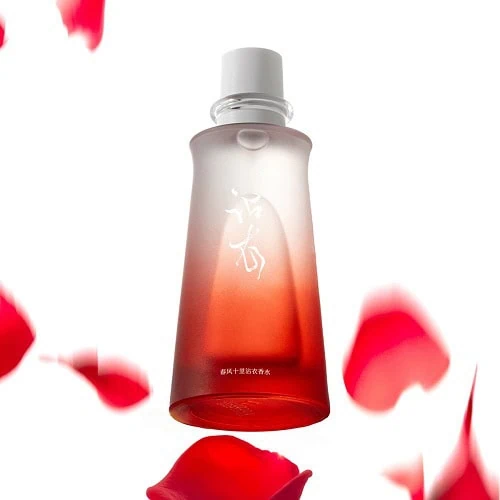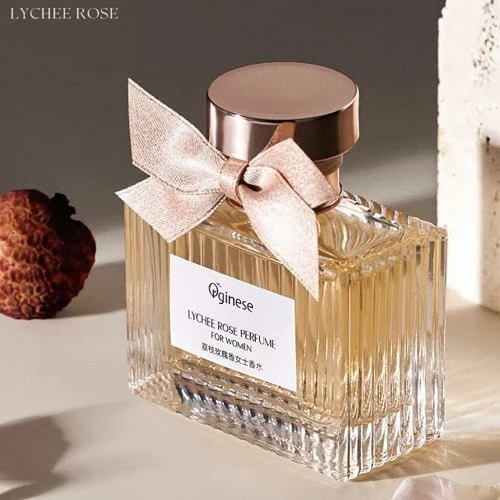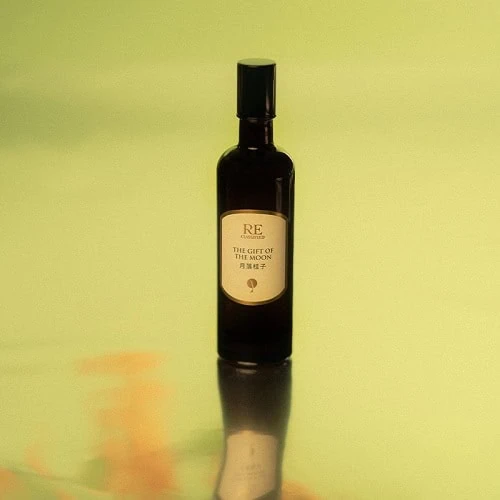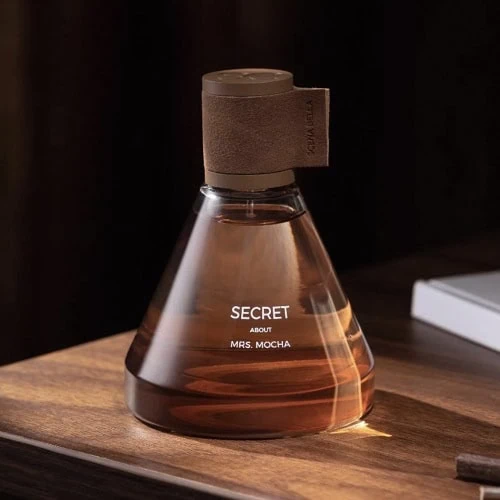I’ve seen so many perfume bottles over the years, and a bad bottle can really kill a great perfume. It’s a problem that plagues many brands, and it’s a shame. It’s like serving a five-star meal on a paper plate.
The best shape for a perfume bottle isn’t one specific design but a unique form that tells a story and embodies the brand’s identity. Niche perfume brands use innovative shapes, colors, and materials to stand out on the shelf, creating an emotional connection with consumers. These bottles are a key part of the entire perfume experience, making them memorable and collectable.

I remember one client who came to me with a fantastic fragrance but a very generic bottle design. They thought the perfume would sell itself, but it didn’t. We worked together to create a bottle that was as special as the scent inside, and sales took off. It showed me how important it is for the bottle to truly represent the brand.
What Is the Best Shape for a Perfume Bottle?
Some people think a simple bottle is the best choice, but that’s not always true. A simple bottle can get lost in the crowd. It needs to be special.
The best shape for a perfume bottle is a design that is both functional and artistic, reflecting the brand’s unique identity and story. It should feel good in the hand and look great on a vanity. This shape can be anything from a classic rectangular design with a unique cap to a completely abstract, sculptural form.

Why Shape and Design Are Important
The shape of a perfume bottle is a silent brand ambassador. It’s the first thing a customer sees and touches. The design tells a story before the perfume is even sprayed. This is a very big part of marketing. It is about creating a desire, not just selling a product. For example, a heavy, solid bottle might suggest a classic, powerful scent. A delicate, curved bottle might suggest a soft, floral fragrance. The material choice also plays a big part. Glass is the standard, but the thickness and finish of the glass matter a lot. A frosted finish feels different from a clear one. A thick glass base gives a feeling of quality and substance. The cap is also a key detail. A metal cap feels more premium than a plastic one. All these small details add up to a big impression. The bottle’s design can also make it easier to use. A bottle that is easy to hold and spray makes the experience more pleasant. It is all about making the user feel good. This is what separates a good bottle from a great one.
| Shape Type | Description | Brand Example |
|---|---|---|
| Classic Rectangular | Simple, clean lines, often with a heavy base. | Chanel No. 5 |
| Abstract & Sculptural | Unique, artistic shapes that stand out. | Mugler Alien |
| Architectural | Inspired by buildings and structures. | Marc Jacobs Decadence |
| Minimalist Cylindrical | Simple, elegant, and often with a sleek cap. | Le Labo |
| Ergonomic | Designed to fit perfectly in the hand. | Carolina Herrera Good Girl |
How to Tell if a Perfume is Niche?
Many people get confused about what “niche” really means. They think it’s just about being expensive, but that’s not the whole story. It’s about a different approach to perfume.
You can tell a perfume is niche when it prioritizes artistic expression over mass-market appeal. These brands often have a unique or unconventional scent profile, use high-quality and sometimes rare ingredients, and package their fragrances in distinctive bottles that reflect their creative vision. Niche brands focus on a specific, often smaller audience.

Understanding the Niche Perfume Market
Niche perfumes are not for everyone. They are for people who want something different. Niche brands do not follow trends. They create their own. This is a big risk, but it also creates a strong connection with their customers. Niche fragrances often use special ingredients that you won’t find in mainstream perfumes. These ingredients can be very expensive and hard to source. The perfumers behind these brands are often given more creative freedom. They are not pressured to create a scent that will sell millions of bottles. Instead, they are encouraged to create something unique and artistic. The bottles are a big part of this. Niche perfume bottles are often very creative and unique. They are not just containers. They are a work of art. This helps the brand stand out in a crowded market. It also tells the customer that this is not just another perfume. It is something special. The price point is often higher, but this reflects the quality of the ingredients and the unique design. It is a very big part of the overall value. This market is about quality over quantity.
| Characteristic | Niche Perfume | Mainstream Perfume |
|---|---|---|
| Focus | Artistic expression, unique scents | Mass appeal, commercial trends |
| Ingredients | High-quality, rare, sometimes unconventional | Common, synthetic, cost-effective |
| Marketing | Storytelling, exclusivity, limited distribution | Large-scale advertising, celebrity endorsements |
| Packaging | Highly creative, unique, and often handmade bottles | Standard, recognizable, often simple bottles |
| Target Audience | A specific, smaller group of perfume enthusiasts | The general public |
Why Do Jean Paul Gaultier Bottles Look Like That?
Many people wonder why the bottles are so unique. I get asked this question a lot. It is a bold design choice that really makes a statement.
Jean Paul Gaultier bottles are famously shaped like a male or female torso to reflect the brand’s core identity of celebrating the human form and sensuality. The iconic designs, like Classique and Le Male, are not just bottles; they are an homage to fashion and the body, making them instantly recognizable and a major part of the brand’s heritage.

The Story Behind Gaultier’s Iconic Bottles
Jean Paul Gaultier has always been a fashion designer who loves to challenge conventions. He is known for his bold, provocative designs. His perfume bottles are no different. The torso shape is a very clear representation of his work in fashion. He often used corset designs and celebrated the human body in his clothes. This design choice for his perfume bottles was a very deliberate one. It was meant to be shocking and memorable. The bottles are not just containers for the perfume. They are a fashion statement in themselves. The cans they come in are also a very unique part of the packaging. The can feels like a vintage tin box, which adds to the nostalgic and rebellious feel of the brand. This is a very good example of a brand where the bottle and the scent are completely connected. The bottle tells you everything you need to know about the perfume before you even smell it. This is a very powerful way to brand a product. The design is so strong that even people who don’t follow fashion know the bottles. This kind of brand recognition is very hard to achieve. It shows the power of a good bottle design. It’s not just about being pretty. It’s about being iconic.
| Bottle Design | Fragrance | Inspiration | Key Features |
|---|---|---|---|
| Female Torso | Classique | The corset, female sensuality, haute couture | Frosted glass, intricate details, metal can packaging |
| Male Torso | Le Male | The sailor, male form, strength and freshness | Clear glass, sailor stripes, metal can packaging |
| Scandal | Scandal | Femininity, legs kicking in the air | Sculptural cap, curved bottle, pink liquid |
| Divine | Divine | Mermaid, golden curves, celebration of women | Golden bodice, mermaid tail cap |
What is the Structure of a Perfume Bottle?
A perfume bottle is more than just glass. It has several parts that all work together. People often just see the outside, but the inside is just as important.
The structure of a perfume bottle consists of several key components: the bottle body, which holds the fragrance; the spray pump, which disperses the liquid; the dip tube, which draws the perfume from the bottle; and the cap, which protects the pump and seals the bottle. Each part is designed to work together to deliver the best user experience.

The Anatomy of a Perfume Bottle
Understanding the parts of a perfume bottle helps you appreciate the engineering behind it. I have seen countless designs. The bottle body is the main part. It is usually made of glass because glass is non-reactive. This means it will not change the perfume’s smell. The thickness and weight of the glass are very important for the feel of the bottle. A thicker bottle feels more premium. The spray pump is the most complex part. It has a very small mechanism that turns the liquid into a fine mist. A good pump makes a very big difference in how the perfume is applied. A bad pump can be a deal-breaker. The dip tube is the small plastic tube that goes from the pump to the bottom of the bottle. It sucks up the liquid. It needs to be clear and strong. The cap is the final piece. It protects the pump from getting damaged or dirty. A good cap should fit securely. It should also be easy to remove. The cap’s design is often a very big part of the bottle’s overall look. All these parts must be made to a very high standard to ensure the perfume stays fresh and works correctly. This is very important for the quality of the final product.
| Component | Function | Material Examples | Design Importance |
|---|---|---|---|
| Bottle Body | Holds and protects the fragrance. | Glass, crystal | Aesthetics, feel, brand identity |
| Pump | Atomizes the liquid into a fine mist. | Plastic, metal parts | User experience, functionality |
| Dip Tube | Transports the fragrance to the pump. | Plastic (Polypropylene) | Invisible, must be precise |
| Cap | Seals the bottle and protects the pump. | Plastic, metal, wood, resin | Overall look, protection, brand identity |
| Collar | Secures the pump to the bottle. | Metal, plastic | Stability, aesthetic finish |
Conclusion
The perfume bottle is much more than a container. It is a piece of art that tells a story and represents a brand’s identity. From niche to iconic designs, the bottle is a key part of the experience.

